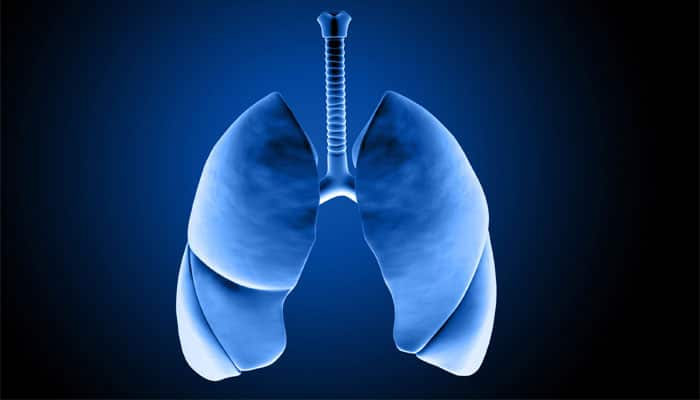London: In a first, scientists have used advanced 3D X-ray imaging technology to view tissues affected by an aggressive form of lung disease in detail similar to an optical microscope.
Originally designed for the analysis of engineering parts, such as jet turbine blades, a powerful scanning equipment at the University of Southampton in the UK has been used to image Idiopathic Pulmonary Fibrosis (IPF) lung tissue samples.
IPF is usually diagnosed via a hospital CT scan or by using a microscope to view a lung biopsy sample. However researchers have now successfully applied Microfocus CT to image biopsy samples.
This allowed them to view each lung sample with a level of detail similar to an optical microscope but now in 3D.
It had been thought that active scarring in IPF progressed like a large 'wave' from the outside to the inside of the lung. Instead, the study found that there are large numbers of individual sites of active disease scarring.
The research team, from the National Institute for Health Research Southampton Respiratory Biomedical Research Unit, believes this finding will help to ensure doctors develop targeted therapies focussing on these areas.
The condition, one of a group of disorders known collectively as interstitial lung diseases, causes inflammation and scarring of the lung tissue.
This makes it increasingly difficult to breathe, and it leaves sufferers with a life expectancy of only three to five years.
"Whilst accurate diagnosis of IPF is essential to start the correct treatment, in certain cases this can be extremely challenging to do using the tools currently available," said Mark Jones, from the University of Southampton and University Hospital Southampton.
"This technology advance is very exciting as for the first time it gives us the chance to view lung biopsy samples in 3D," said Jones.
"We think that the new information gained from seeing the lung in 3D has the potential to transform how diseases such as IPF are diagnosed," he said.
"It will also help to increase our understanding of how these scarring lung diseases develop which we hope will ultimately mean better targeted treatments are developed for every patient," Jones said.
Microfocus CT can scan inside objects in great detail - rotating 360 degrees whilst taking thousands of 2D images, which are then used to build detailed 3D images.
The team is now studying how this technique can help doctors improve the way we diagnose such diseases more accurately, to ensure every patient will receive the correct treatment.
The study was published in the journal JCI Insight.
















